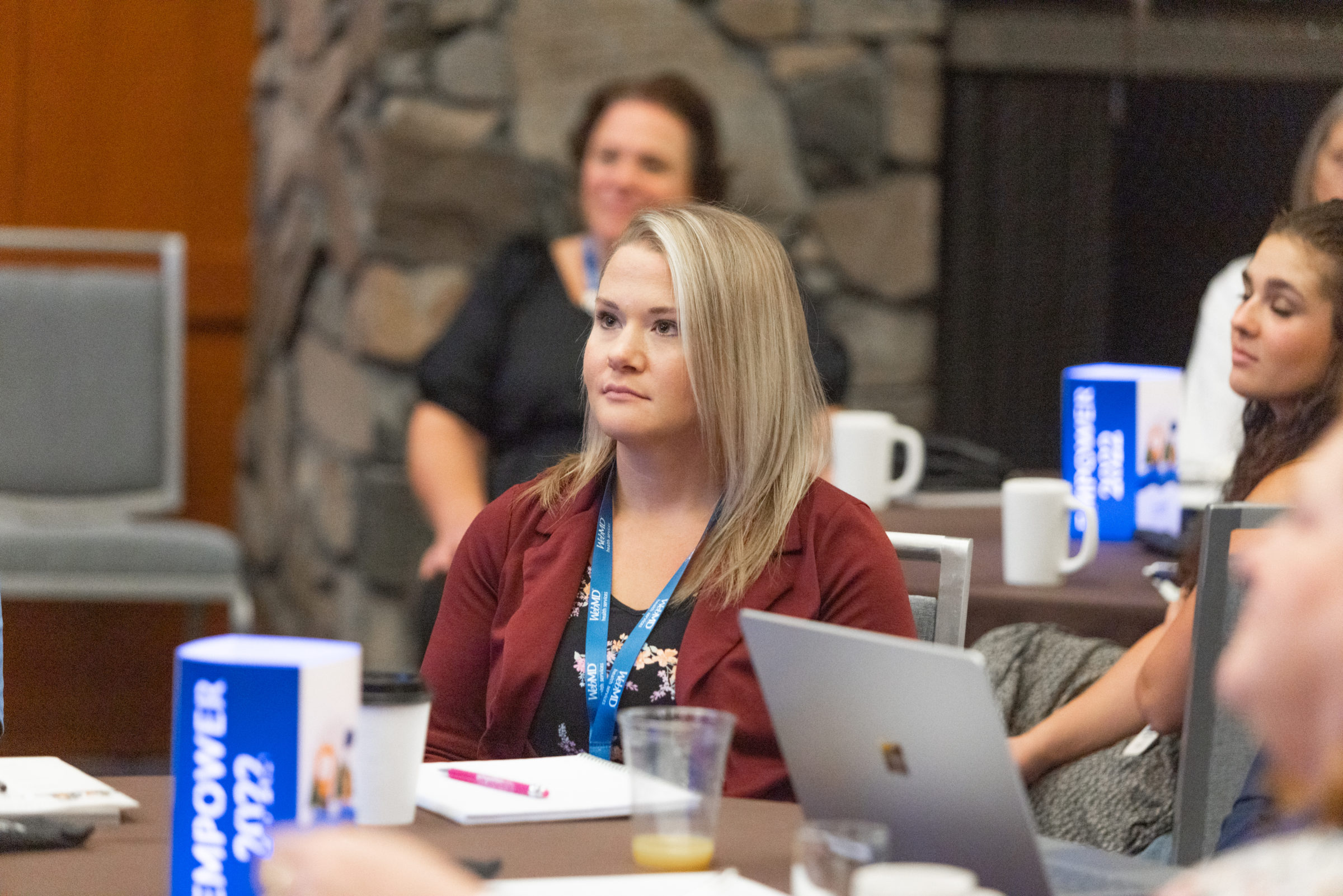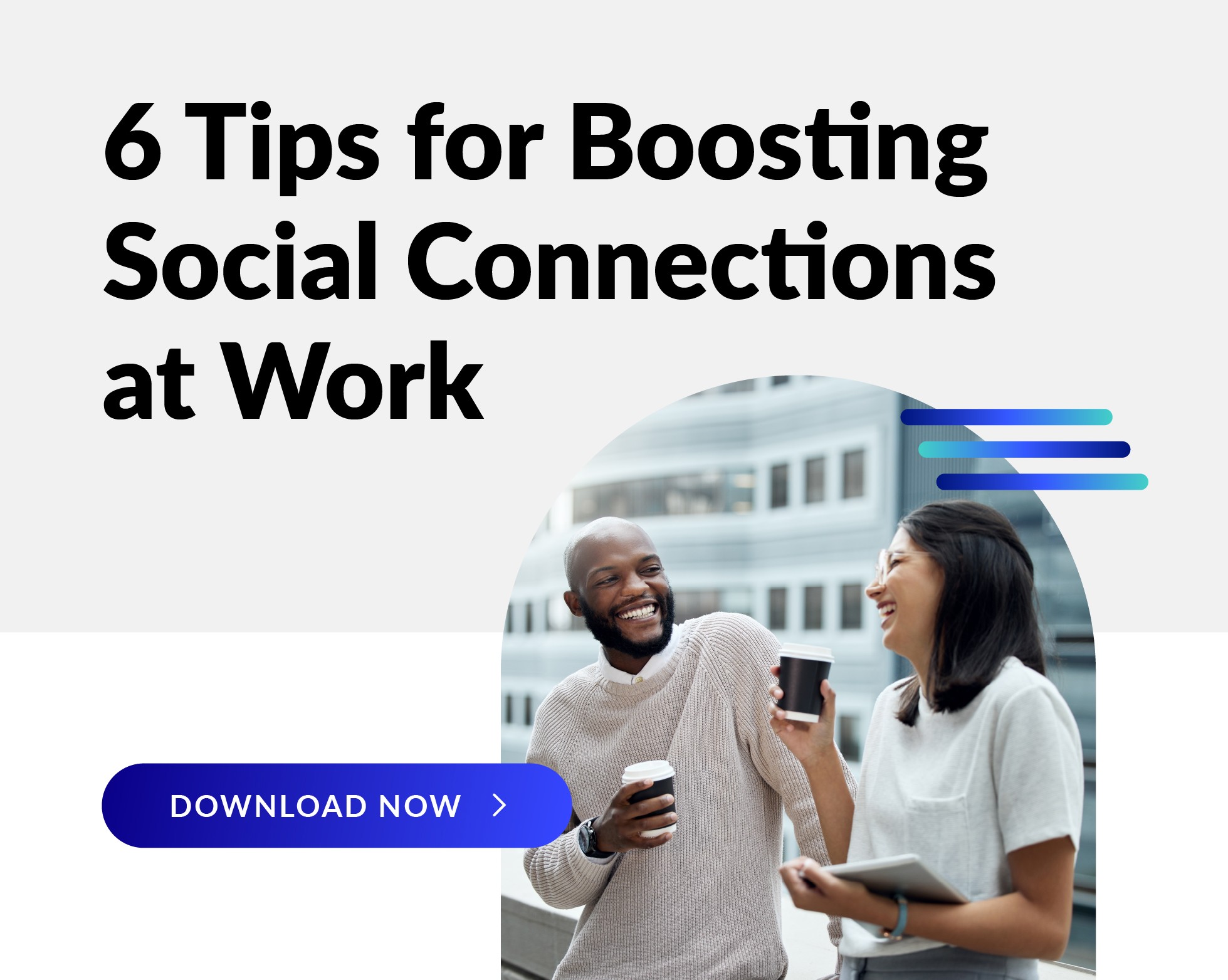 It’s been over a month and we’re still basking in the proverbial glow of the Empower Forum, our recent Client Forum at the beautiful Skamania Lodge along the Columbia River to discuss all things well-being. Before the fireside chat session, we asked clients to send us their toughest well-being program questions. A great discussion ensued, and we’re pleased to share the highlights in this week’s blog.
It’s been over a month and we’re still basking in the proverbial glow of the Empower Forum, our recent Client Forum at the beautiful Skamania Lodge along the Columbia River to discuss all things well-being. Before the fireside chat session, we asked clients to send us their toughest well-being program questions. A great discussion ensued, and we’re pleased to share the highlights in this week’s blog.
You asked: What does a healthy workplace culture look like today?
A healthy workplace culture is so important right now. Recent studies show that nearly 50% of employees would leave their current jobs for a lower-paying opportunity at an organization with a better culture. If we had to name one aspect of workplace culture that is most important, it would have to be flexibility. No matter what your strategy is – return to the office, remain remote, or a hybrid model – letting employees have some say in how, when, and where they work is key to good workplace culture.
Social connections are also important – especially with a dispersed workforce. At WebMD Health Services we have team members working in almost all 50 states, so we try hard to create connections between them. A few things we’ve done are movie nights, virtual workouts with our own health coaches, at-home cooking and cocktail-making demos, March Madness basketball challenges, and National Pet Day virtual pet playdates. We are also hosting a virtual showing of Hocus Pocus 2 leading up to Halloween! At the beginning of the year we invested in a more formal peer-to-peer program that matches up individuals from different areas of the company every quarter to have structured conversations about topics ranging from finding inspiration at work to being a better manager. It’s been an amazing way for our team to meet others they might not normally cross paths with and build real connections.
Leadership also sets the tone for a healthy workplace culture. Leaders are increasingly being called upon to practice empathy and compassion and also to create a culture where people can be seen, heard, and valued for being their authentic selves. They also need to give employees “permission” to focus on their well-being – across multiple dimensions – and walk the talk themselves. Finally, people – especially younger generations – are craving more connection to the meaning of their work. Leaders can help here by reminding people of the company’s mission or purpose and connecting it back to the work people do.
You asked: Well-being programs have evolved quite a bit in the past few years. What new programs, strategies, philosophies, or investments characterize the “new” well-being program?
First, we’d have to say that most organizations now realize that helping employees with well-being is a “must-have” to retain and attract talent, versus a “nice-to-have.” Companies see well-being as an extension of their culture, not just something people do on their own time. Of course, mental health is a critical element of any well-being program, and we are helping clients offer their employees several diverse ways to access that help via chat apps, podcasts, resilience tools, etc.
We also see well-being programs become more personalized – for example, identifying what well-being means to everyone in their organization and tailoring programs to do just that. For example, some of our clients have customized wellness challenges to support what their population needs—be it self-care, social justice, community service, and more. Personalization in this new world also means unique goal-setting for individuals: for one person well-being means eating healthy, but for someone else it’s looking for more opportunities to connect with people after the isolation of COVID.
Well-being programs also have to be accessible to a dispersed workforce now. While in the past we relied on well-being champions in the building to drum up excitement for events, we have to rethink how to reach employees who work remotely. On the flip side, we are seeing renewed interest in having a “human element” as part of the well-being program – such as our onsite Dedicated Well-Being staff. As companies encourage workers to return to the office this human contact with a well-being professional is one way to entice them.
You asked: Point solutions seem to be everywhere these days. Why is a holistic well-being program better than a point solution or a combination of point solutions?
It’s true, every time you turn around there seems to be a new point solution. We get it – employers and health plans want to deliver a comprehensive, personalized, and holistic well-being program to employees and members. But, when there are too many apps to manage employees begin to experience “point solution fatigue.” People start to be overwhelmed by going to multiple places for well-being and some may just abandon them all.
From the organization’s standpoint, there are other risks:
- It can be hard to measure results from multiple standalone solutions;
- You have to juggle relationships with many different vendors, but each point solution only addresses one problem;
- Each solution feels transactional and siloed, versus outcomes-focused;
- There’s no or very little sharing of information, and you bear the burden of trying to bring all these disparate benefits and services together;
- There’s no consistent look and feel across all the solutions; and
- It’s expensive!
That said, we recognize that even a really holistic well-being platform can’t be comprehensive in everything. Financial wellness, caregiving for an aging parent, mental health practitioners – sometimes you do need to go external to get some of those important services to employees. For example, though we currently offer stress coaching specialists – and will soon have mental health coaching specialists –we also recognize that if someone needs very specific help or support, we have to refer them out to a service vendor our clients have (like an EAP) or another offering.
At the end of the day, our philosophy is this: we start with a comprehensive platform that focuses on assessing one’s health, lifestyle and condition management support, engagement, daily habits, challenges, community, and incentives. We then layer on vetted, curated vendors to support more in-depth areas: like help for musculoskeletal conditions and pain management through our partnership with Fern Health and caregiving with Torchlight. We also take care not to add multiple point solution vendors in one category because we vet and ensure we are offering the best. We think this is the best way to offer employees and members what they need while making the experience as seamless and user-friendly as possible.
* * * * * * * * * * * * * * * * * *
That’s a wrap! We hope you’ve enjoyed learning more about the amazing discussions we had at the Empower Forum and look forward to seeing more of you at our next event. In the meantime, to learn how a well-being program can benefit your organization, visit our website or contact us at connect@webmd.net.



